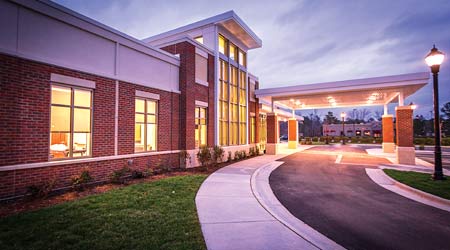FMs Face Critical Compliance Challenges in Accredited Ambulatory Surgery Centers
It's critical to not just understand the various regulations, inspections and other communications involved, but the proper care and implementation of what might be called the life-safety compliance book.
Facility managers responsible for accredited ambulatory surgery centers must be aware of the special operational upkeep issues and maintenance requirements for these centers. These highly regulated spaces form a specialized niche within the facilities maintenance discipline. Because they involve sterile surgical environments such as operating rooms, accredited ambulatory surgery centers fall under the jurisdiction of several critically important regulatory bodies, each with its own distinct points of emphasis.
These include the Accreditation Association for Ambulatory Health Care (AAAHC), a consultative body charged with the accreditation and quality control for such centers, as well as the Joint Commission, a nonprofit which accredits and certifies all health care programs and organizations in the United States. In addition, Centers for Medicare and Medicaid Services (CMS) has its own regulatory policies and procedures. And last but not least, the National Fire Protection Association (NFPA) weighs in with its own requirement for life safety.
For the facility manager, the bottom line is not merely understanding the various regulations, inspections and other communications involved, but the proper care and implementation of what might be called the life-safety compliance book.
Life Safety Compliance Book
When it comes to dealing with highly regulated spaces, doing is only half the battle. The other half of the challenge is keeping an up-to-date paper trail or documented proof of performance. The life safety compliance book is a requirement set and rigorously adhered to by each of the various regulatory organizations. It contains all documented evidence for what is called environment of care.
The life-safety compliance book documents all maintenance records of building equipment associated with life safety at each installation. Facility managers should always keep track of the inspection schedule and pull together the documentation needed.
The regulatory bodies demand strict adherence to requirements for equipment testing and inspecting to assure and verify proper operation should an emergency ever arise. To cite just a few examples, every backup generator must be tested and documented as operational. A monthly transfer test is necessary to assure facility operation in the event of power interruption. In addition, fire dampers must be inspected at least every four years.
It is pivotal for facility managers to address all such requirements and proactively organize both response and documentation either in-house or by relying on approved vendors. Any deficiencies uncovered should be dealt with to assure proper corrective action in a timely manner.
Proper listing of all equipment associated with life-safety maintenance must be accompanied by signature of the assigned individual. There must be a constant focus on keeping the life- safety compliance book current and proper as a reliable record of compliance that assures the safety of the facility and every patient and employee.
Related Topics:











